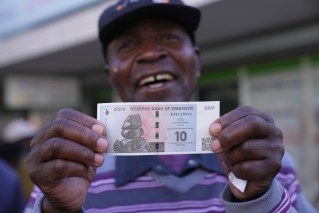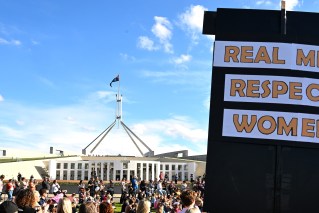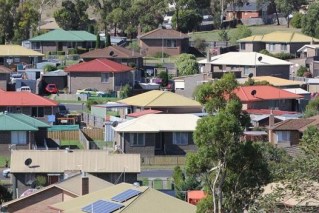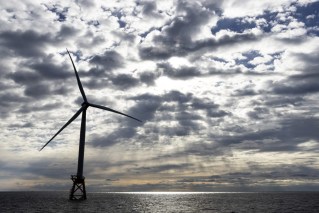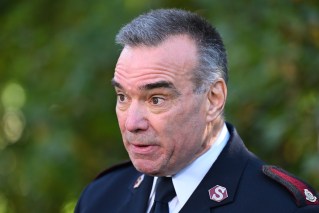Regional Queensland is least affordable rental market in Australia – so where to now?
Australia’s rental market has gone from bad to worse as unaffordable housing woes in cities spread to the regions and rental price hikes outstripped wage growth.
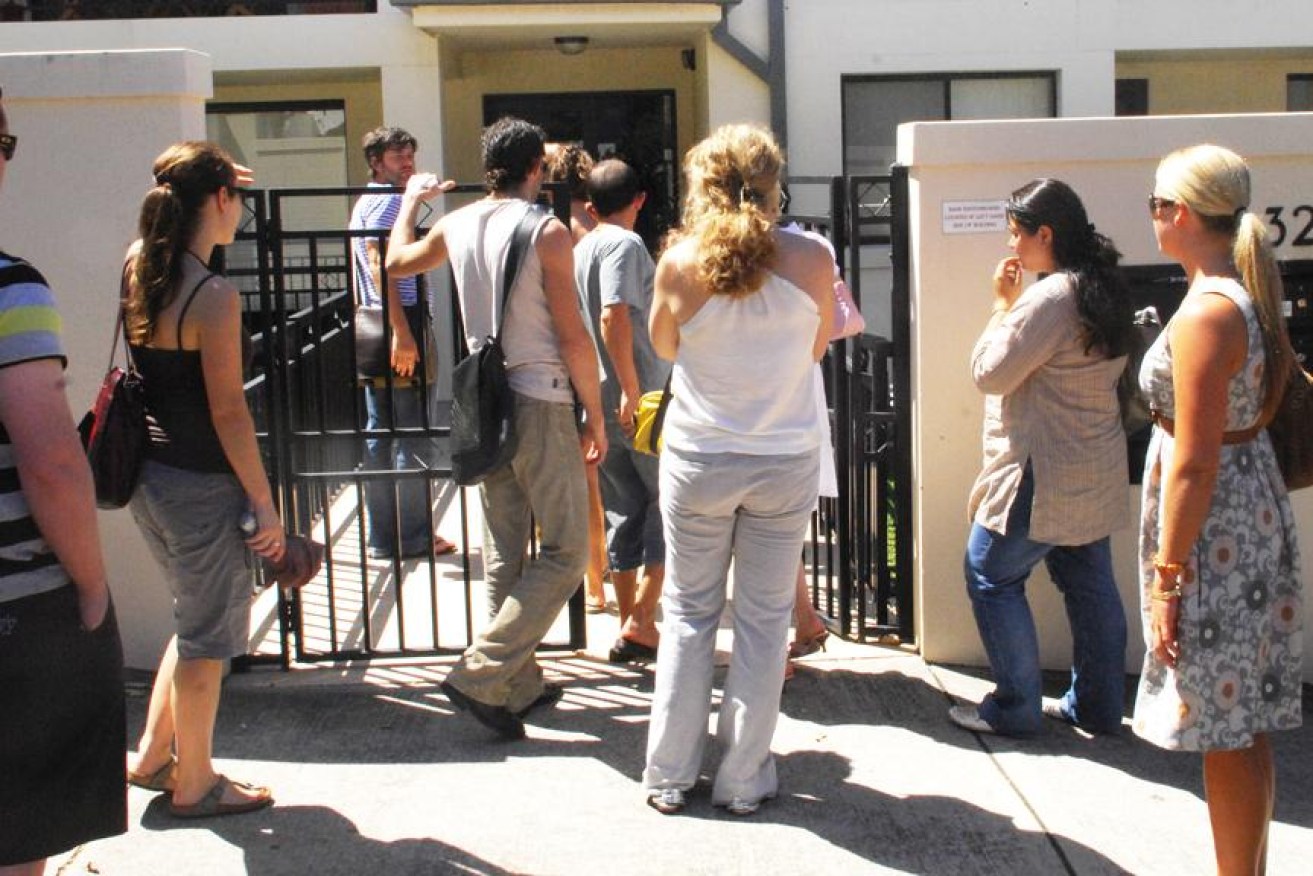
Desperate renters queue up outside a rental house. (Photo: RealEstate.com)
That’s according to the Rental Affordability Index by National Shelter and SGS Economics, which found affordability plummeted in every city except Canberra and Hobart over the last 12 months.
Regional Queensland is now the least affordable place in Australia when comparing income to rental prices.
Median rentals there cost $553 a week, reaching the rental stress threshold of 30 per cent of an average household’s pre-tax income going to housing.
Sydney experienced the sharpest decline in affordability in city areas, jumping to 29 per cent of household income, which is in line with Hobart.
Melbourne and Perth also experienced a 10 per cent decline in affordability.
There are now far fewer more affordable areas Australian renters can try to move into, according to Ellen Witte from SGS Economics & Planning.
“It’s really starting to hurt the economy, people have to live further away from jobs and businesses are struggling to find workers” Ms Witte said.
Rockhampton retiree Deb Lindley said she recently had to move after the rent on her old home went up by $120 to $480 a week.
She managed to stay there for several months until assistance from state government program RentConnect ran out. Ms Lindley is now living in a more affordable small unit, which does not have a balcony or fence to protect her dog.
“I’m just very angry,” Ms Lindley told AAP.
The 69-year-old cancer survivor had to give away most of her furniture to squeeze into her new place and believes the private rental market needs to change.
“It’s broken 150 per cent, it’s wrong,” she said.
Data collected for the index showed people on lower incomes suffered the most.
A single person on Jobseeker has to spend at least 75 per cent of their income on a one bedroom apartment in city areas and 53 per cent in the cheapest regional area.
Single pensioners need to spend at least half their income on rent in every capital city except Adelaide and Hobart, and would need to spend at least 32 per cent of their money on regional housing.
National Shelter chief executive Emma Greenhalgh said tenants had been smashed with rental hikes well beyond income growth.
“Rental affordability in Australia is going from bad to worse,” Ms Greenhalgh said.
“We have a rental crisis that’s truly national, there’s no place that’s affordable for very low and low income households and moderate income households suffering.
“We cannot underplay the significance of this as both a social and an economic issue.”
Jindabyne in regional NSW and Seaforth in Sydney are the most unaffordable localities based on outright prices per postcode, with rent as a share of average household income estimated at 70 per cent and 65 per cent respectively.
Ms Greenhalgh said the problem needed to be attacked from several angles including building more social and affordable housing, immediate rent relief and a national standard on price increases.
She said the nation needs to have a serious discussion about tax reform, particularly negative gearing policies and capital gains discounts.
“We’re currently commodifying housing as a wealth tool and not a home,” Ms Greenhalgh said.
“These tax measures disproportionately benefit high income households.”
Housing Minister Julie Collins said the government was supporting the 30 per cent of people who rent, including through the $10 billion Housing Australia Future Fund intended to provide a pipeline of social and affordable rentals.
She also highlighted an agreement for states and territories to work on practical steps to increase renter protections, tax changes affecting build-to-rent accommodation investments and increasing Commonwealth Rent Assistance by 15 per cent.
“At a federal level, our focus is on improving housing supply, because this is the best way to improve housing affordability for renters and buyers,” Ms Collins said.
The rental affordability index from charity National Shelter and SGS Economics:
NATIONAL:
* The most unaffordable place anywhere in the nation is regional Queensland when comparing average rental household income to median rent prices. Renters in regional areas of the Sunshine State must now pay 30 per cent of their income on rent, meeting the threshold for rental stress
* Sydney and Hobart are the most unaffordable capital cities while only Melbourne and the ACT have acceptable rents for average income households
* Affordability declined in all regional areas except Tasmania
* A single person on Jobseekers must spend 75 per cent of their income on a one bedroom rental in capital city areas and 53 per cent in the cheapest regional area
* A single pensioner must spend 50 per cent of their income in rent in all capital cities except for Hobart and Adelaide. They must spend at least 32 per cent of their income on regional rentals
* The 10 most unaffordable postcodes are 2627 Jindabyne (regional NSW), 2092 Seaforth (Sydney), 6015 City Beach (Perth), 4562 Eumundi (regional Queensland), 2063 Northbridge (Sydney), 2481 Byron Bay (regional NSW), 2085 Belrose (Sydney), 2086 Frenchs Forest (Sydney), 2102 Warriewood (Sydney) and 2107 Avalon/Bilgo (Sydney)
NSW:
* Sydney – Six of the most unaffordable postcodes in the nation are located in the harbour city and all inner areas are deemed unaffordable or extremely unfordable. The average rental household must live 15-20 kms from city to find acceptable homes
* Regional NSW – On the edge of being deemed unaffordable. Pressures felt the most along the coastline and regional centres like Bathurst, Maitland and Wagga Wagga
VICTORIA:
* Melbourne – Most affordable capital city for renters but still approaching moderately unaffordable levels. Affordable rentals are now located 15 kms from the CBD
* Regional – The Surf Coast is the most expensive area. The only regional areas in Victoria deemed affordable are Kerang, Nhil and Numurka
QUEENSLAND:
* Brisbane – No affordable areas located in greater Brisbane. Areas on the outskirts of the city including Woodford, Rosewood, Sandstone Point and Caboolture experienced a 20 per cent drop in affordability
* Regional – Regional Queensland is the nation’s most unaffordable place to rent, comparing rents to incomes. Median rental prices in regional areas are the same as Brisbane, despite the capital city having higher incomes
SOUTH AUSTRALIA
* Adelaide – Renters must live 30 kms from the CBD to find affordable housing. A previously affordable corridor from Bellevue Heights to Gillman has disappeared
* Regional – Rents in regional areas jumped 12.9 per cent in the past 12 months but it still offers the cheapest median rent anywhere in the nation
TASMANIA:
* Hobart – Median rental rate has grown 60 per cent since 2016. Hobart rental prices are now almost equal to Melbourne even though the average rental household income is 21 per cent lower
* Regional – Affordability at an historic low. The most affordable areas are in the state’s northwest, excluding Bernie and Devonport
WESTERN AUSTRALIA:
* Perth – Rents in Greater Perth have jumped 52.4 per cent since mid 2020. Some suburbs still offer acceptable rents in the CBD, north, east and southeast
* Regional – Most areas offer acceptable to very affordable rent but there is significant variation between regional centres and remote areas

